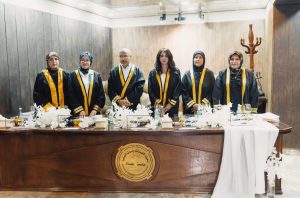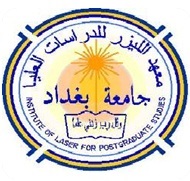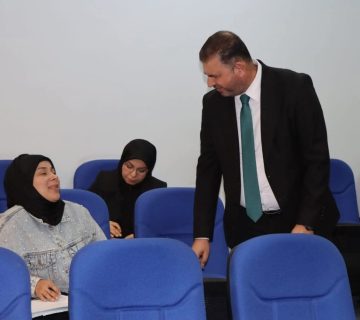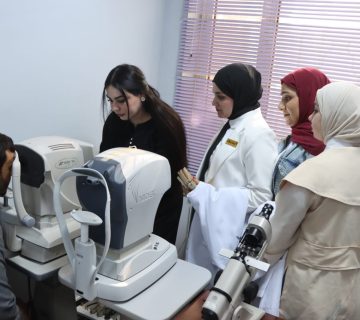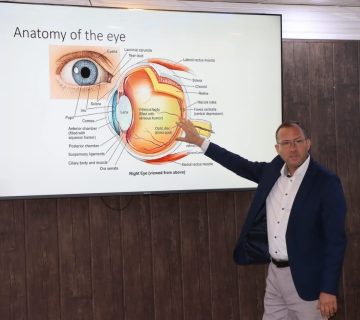The thesis of the master’s student, Aya Adnan Asie / Laser Applications was discussed,
Her Thesis is entitled:
Evaluation of LLLT dual diode 810,980nm effect on orthodontic treatment
The discussion committee consisted of the professors whose names are listed:
1-Asst. Prof. Dr.Hanan Jafar Taher/ Ph.D. of laser /Physics/ Institute of laser for Postgraduate Studies / University of Baghdad / as a Chairman
2- Asst. Prof. Dr. Faez Yaqoob Khadem / PhD in Maxillofacial surgery
/ Ibn Sina University/ as a Member
3- Asst. Prof. Dr. Layla Mohammed Hasan / PhD in Biology/
Institute of laser for Postgraduate Studies / University of Baghdad /
as a Member
4- Asst. Prof. Dr. Rawaa Ahmed Faris/ PhD in Chemistry / Institute of laser for Postgraduate Studies / University of Baghdad/ as a Member and Supervisor
5- Consultant doctor Balsam Al Saady / dentest /Maxillofacial surgery/ high diploma in laser applications /al Karkh hospital / as a Member and Supervisor
Orthodontics is a specialized branch of dentistry focused on correcting dental and facial irregularities, known as malocclusions. It aims to achieve proper teeth alignment, improving oral function and aesthetics. However, the decision of patients to receive the suggested orthodontic care may be impacted by the challenging, prolonged, and painful nature of orthodontic treatment, as well as other orthodontic treatment drawbacks. The aim of this study is to evaluate the effectiveness of Low-Level Laser Therapy (LLLT) using a dual diode (810,980nm) in orthodontic treatment to assess the reduction of pain associated with orthodontic force, estimate the acceleration of tooth movement.
Methods: This study was conducted at Alkarama Specialized Dental Center and involved 11 patients diagnosed with class II division I malocclusion who were undergoing fixed orthodontic appliance treatment. Of the participants, 2 were male and 9 were female. The study group received an additional treatment of Low-Level Laser Therapy (LLLT) using a dual diode with a wavelength of 810,980nm, delivering 100 mW power output. The LLLT application involved three buccal and three palatal points along the canine root, with each point irradiated for 20 seconds. The control group received conventional treatment alone.
To assess pain levels, the Visual Analog Scale was employed, and tooth movement was evaluated using digital vernier measurements. Throughout the study, measurements were recorded every 21 days, totaling 105 days of observation. Data from the 11 patients were subjected to appropriate statistical tests to determine the effectiveness of LLLT in reducing pain associated with orthodontic force and accelerating tooth movement. The study adhered to
Abstract II ethical guidelines, and informed consent was obtained from all participating
individuals.
Results: Results showed that after 105 days, the study group receiving LLLT experienced a statistically significant reduction in pain levels associated with orthodontic force (p < 0.05). Additionally, LLLT significantly accelerated tooth movement compared to the control group (p < 0.01). The total treatment duration for the study group was significantly shorter than the control group (p < 0.001). No adverse effects related to LLLT treatment were observed throughout the study, ensuring its safety.
Conclusion: This study demonstrates that Low-Level Laser Therapy (LLLT) with the specific parameter settings employed (dual diode 810,980nm, 100 mW power output, three buccal, and three palatal points, each irradiated for 20 seconds) significantly reduces orthodontic treatment associated pain and accelerates orthodontic tooth movement. The application of LLLT as an adjunctive therapy in orthodontic treatment offers a promising way to greatly enhance treatment speed and patient comfort.
